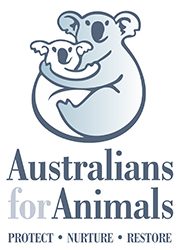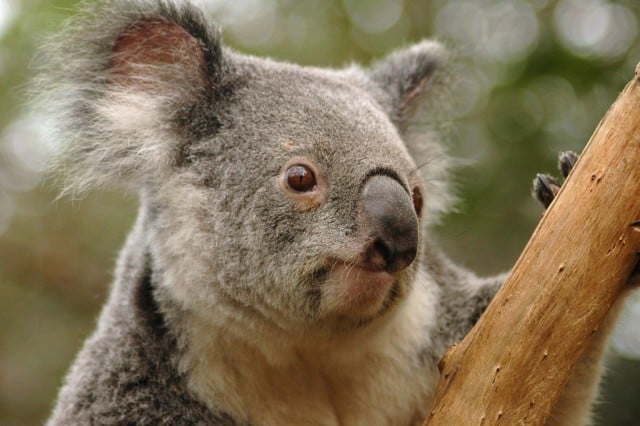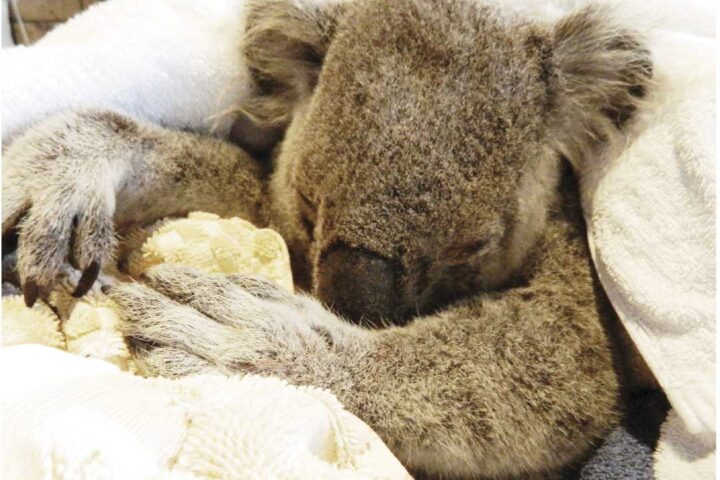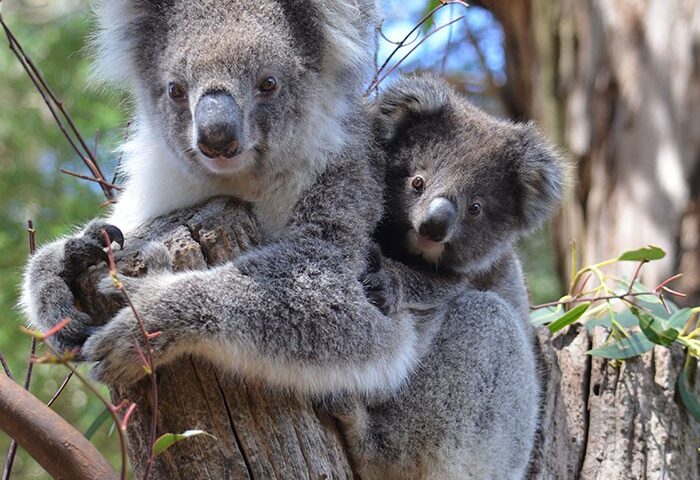Aiding and abetting the killing of koalas
Dailan Pugh, The Echonetdaily. October 28th, 2013
Koalas need large trees. Photo: Todd Odegaard/Flickr
Dailan Pugh
We have long recognised that our iconic koalas are in danger of extinction on the far north coast and, despite having laws in place for 20 years to redress their decline, our governments collude to hasten it.
Governments of all persuasions have proven that they are willing to have rules and regulations to protect koala habitat as long as they are ineffective.
It is well past time that meaningful and effective protections for koalas were implemented on the far north coast.
The principal requirement is the identification, protection and enhancement of core breeding aggregations and the maintenance of corridor linkages between them.
While councils fumble, the NSW government is now dismantling the feeble measures aimed at attaining this.
With threats increasing and protection declining, people need to now stand up for our koalas if they are to have a future.
We have removed and fragmented koala habitat through land clearing and urban expansion, and we have degraded it through logging. And we continue to do so.
Koalas’ social system can begin to break down as habitat is degraded and fragmented.
As koalas attempt to move between the remaining patches of habitat they are suffering increased mortalities due to vehicle collisions and dog attacks.
As they become more inbred and stressed they are increasingly vulnerable to diseases.
Global warming is compounding these effects by reducing the nutritional quality and moisture content of gum leaves, causing heat stress, aggravating eucalypt dieback, and increasing the frequency and intensity of droughts and bushfires.
Other developing threats are the creation of gasfields in koala habitat near Casino, proposals to burn many thousands of trees from native forests for electricity at Condong and Broadwater, and music festivals in Byron Shire.
Stable breeding aggregations of koalas comprise individuals with overlapping home ranges of around five hectares.
Koalas show strong fidelity for their home ranges throughout their lives, which may be 8-10 years. The size and viability of a koala’s home range is dependent on the availability of resources within it.
Big trees vital
In this region, for feeding koalas preferentially select larger (over 30cm diameter) individuals of Tallowwood, Grey Gum, Forest Red Gum and Swamp Mahogany, though also feed on other species.
They have additional requirements for other trees in gullies and the understorey to shelter in.
Koala survival depends on maintaining and enhancing our remaining patches of core koala breeding habitat, and enhancing the linkages between these core areas.
State Environmental Planning Policy No. 44 (Koala Habitat Protection) came into effect in 1995 with the aim to ‘encourage the proper conservation and management of areas of natural vegetation that provide habitat for koalas to ensure a permanent free-living population over their present range and reverse the current trend of koala population decline:
a) by requiring the preparation of plans of management before development consent can be granted in relation to areas of core koala habitat, and
b) by encouraging the identification of areas of core koala habitat, and
c) by encouraging the inclusion of areas of core koala habitat in environment protection zones’.
The coastal population of koalas along the Tweed-Brunswick coast are in imminent danger of extinction due to major coastal development (notably Kings Forest), bushfires, and because of the severing of the most important hinterland link due to the development of the North Byron Parklands festival site.
The genetically distinct coastal population south of the Brunswick River to Broken Head has partially recovered in recent years, though due to its small size (around 240 individuals) is similarly threatened by development of the Bluesfest site and the loss of core habitat and linkages in the proposed West Byron urban development.
It is worrying that when the Department of Planning was considering development proposals for North Byron Parklands and West Byron they recognised that Koala Plans of Management (KPOM) were required, though considered that these could be done after the developments had been approved.
Around Lismore the koala population also appears to have been increasing over the past 20 years, no doubt aided by the work of dedicated volunteers such as Friends of the Koala.
In the Ballina LGA, koala populations now appear to be declining, a situation expected to worsen with the highway upgrade.
The aim of SEPP 44 was always to prepare Comprehensive Koala Plans of Management (CKPOM) for whole Local Government Areas.
To date there is only one for part of a LGA on the far north coast. It wasn’t until early this year that Lismore City Council’s CKPOM for that part of the LGA to the south-east of Lismore was finally adopted.
Byron Shire Council is currently considering a CKPOM for the coastal section of its LGA, though has put this on hold because councillors did not like the reporting of impacts of the Blues Festival.
Festival impacts
The Byron Coast Koala Habitat Study reports on studies into the effects of the Blues Festival on koalas in 2010 and 2012 that found that around half the koalas were killed and, of the survivors, half displayed aversive behaviour to the music.
Also worrying was a decline from 11 to 8 koalas over this time and only one recapture.
This led the study to conclude that the genetically distinct Byron koalas are particularly sensitive to disturbance and are likely to be displaced from within 650 metres of the stages over time.
Attempts by Byron Shire Council and Tweed Council to include high-quality koala habitat into environmental zones last year were thwarted by the intervention of Don Page and Thomas George to excise proposed environmental protection zones from far north coast Local Environmental Plans.
They went further by prohibiting the identification of wildlife corridors in LEPs.
So 18 years after the adoption of SEPP 44 it has done very little to safeguard koalas because of a lack of will to implement it.
When we finally started to make progress, the NSW government intervened to stop it. Now they intend to get rid of SEPP 44.
In the Byron LGA de-facto protection for koalas has effectively been provided in rural areas by a Tree Preservation Order that has been in place since 1986, though the NSW government is also getting rid of this.
Their intent is to make the Native Vegetation Act the only protection available in rural areas throughout the region.
There are already numerous exemptions for clearing which have no regard to koala habitat, and these are being expanded.
The only specific mechanisms that will be available to protect koalas in rural areas are logging codes of practice for public and private land.
Given the recent attempts by the community to enforce these, the NSW government is now also intent on getting rid of them.
For koalas, the logging codes require the retention of minimal numbers of feed trees when koalas are found in preferred forest types.
Exclusion zones
They also variously require the establishment of 20-metre exclusion areas around koala high use trees if they are found.
It is this later requirement that has the theoretical potential to provide partial protection for core koala breeding habitat.
For public lands the Forestry Corporation are required to thoroughly search for koala scats ahead of logging to identify and protect Koala High Use Areas (HUAs).
It wasn’t until the North East Forest Alliance (NEFA) caught the Forestry Corporation logging koala HUAs in Royal Camp State Forest (near Casino) last year that their refusal to properly search for koala scats and identify koala HUAs was publicly exposed after 15 years of avoiding this requirement.
For private lands, loggers are not required to look for koala high use trees, or any other threatened species, and therefore they are not usually protected.
This wasn’t publicly exposed until the local community recently intervened to identify koala high use trees on a private property being logged by the Forestry Corporation at Whian Whian (near Dunoon).
Where the Forestry Corporation had identified two such trees, the community identified 26 along with core koala breeding habitat.
Given the NSW government’s increasingly desperate attempts to meet its unsustainable timber commitments, it should come as no surprise that they are intending to rewrite the logging codes next year.
Getting rid of the requirements to identify and protect koala high use trees is high on their list.
It is our local National Party representatives, Don Page, Thomas George, and Geoff Provest who are behind these proposals to gut the existing protections for koalas and burn native forests for electricity.
If you care, then they are the ones you need to convince to provide meaningful protection for core koala habitat and linkages. Please hold them to account.
In the meantime, see if you can convince Byron Shire councillors to stop stuffing around and ensure they exhibit and adopt their Koala Plan of Management without further delays.




